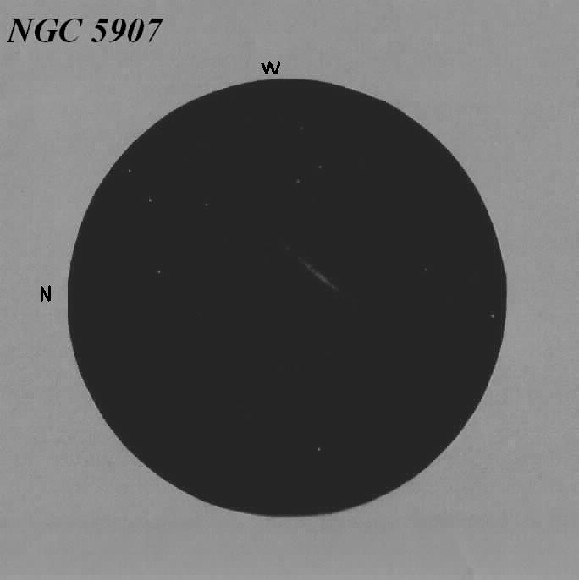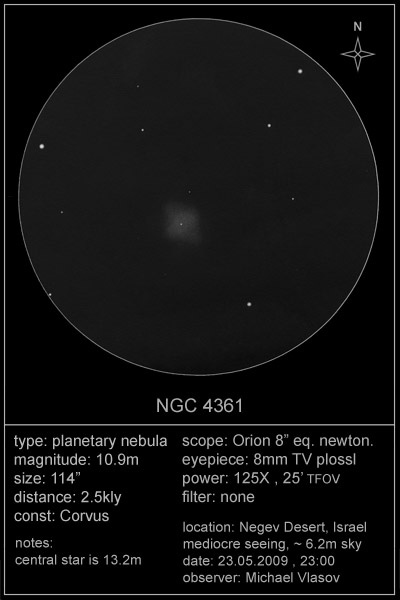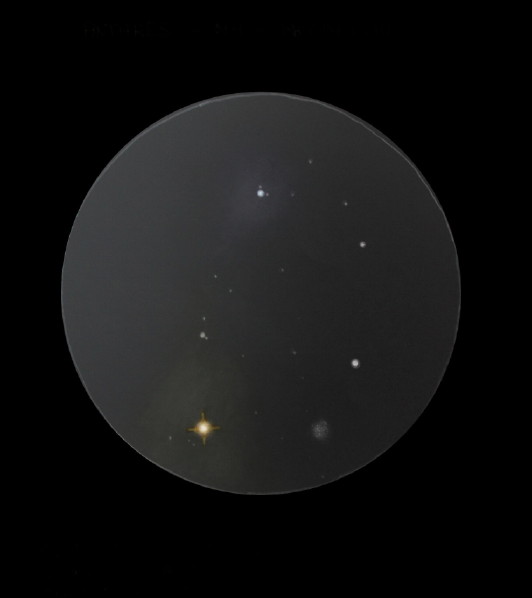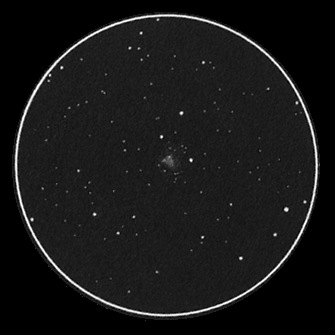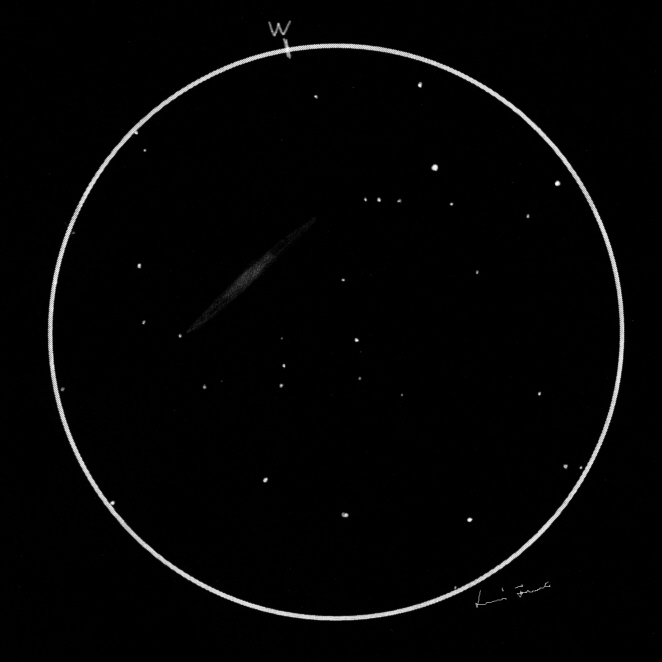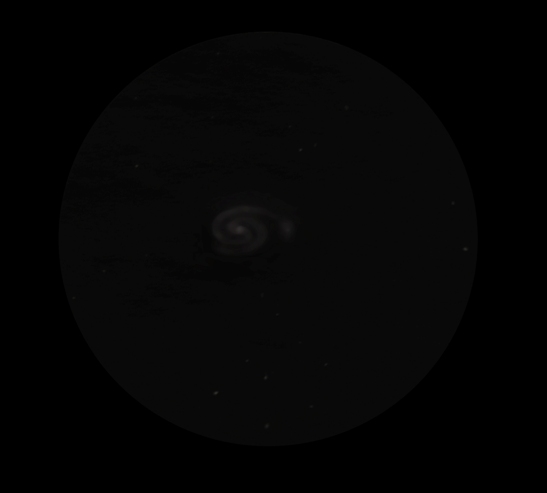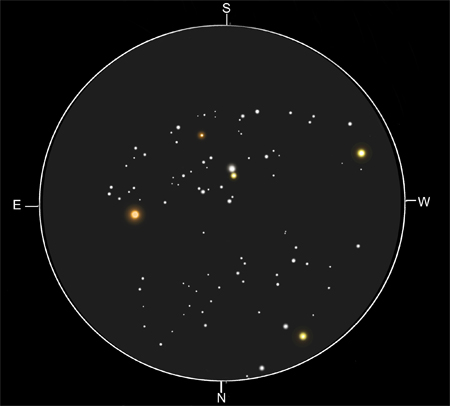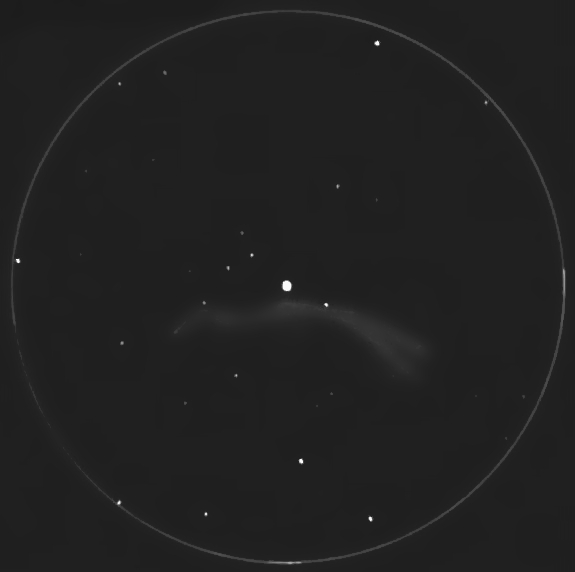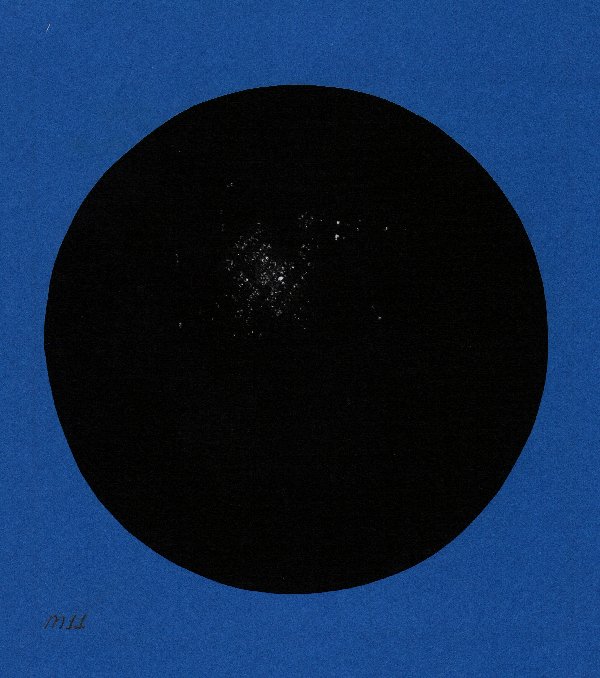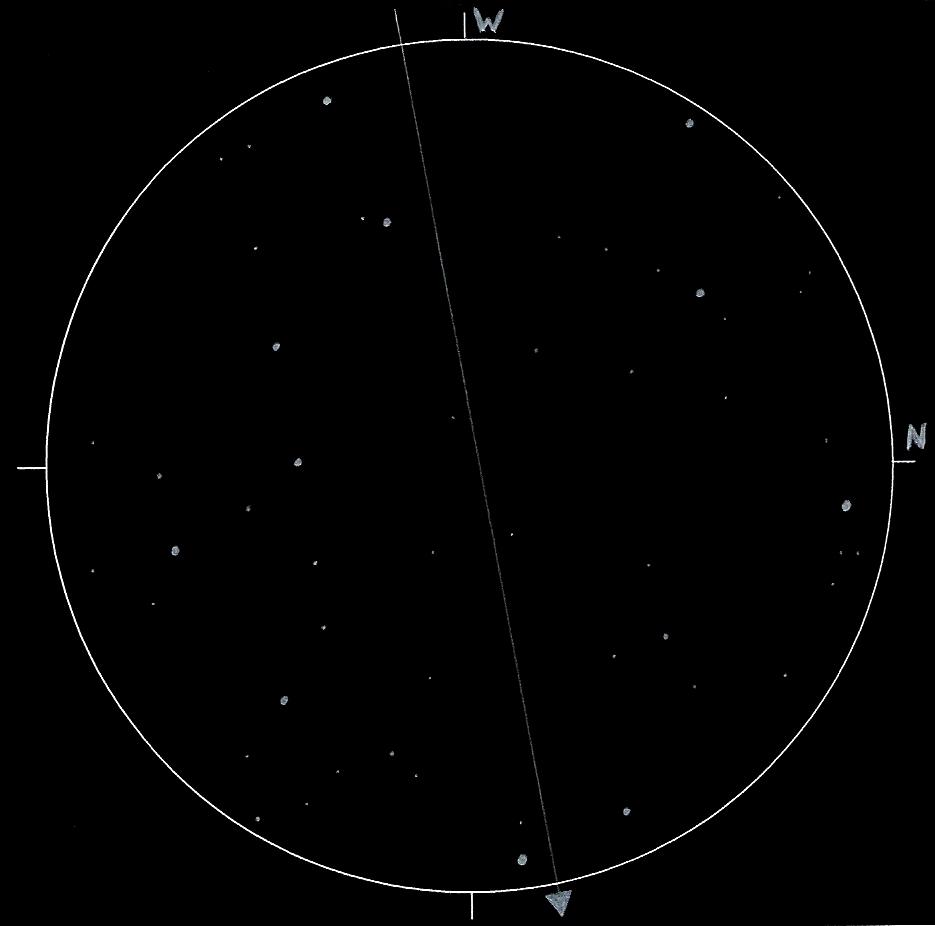
The ISS Tool bag
Sketch and Details by Jef De Wit
On November 18 2008 Endeavor astronaut Heide Stefanyshyn-Piper lost her grip on a tool bag during a spacewalk outside the International Space Station. The tool bag cost $100,000 and its loss meant astronauts had to share the remaining tool bag for subsequent spacewalks. The bag weighs about 14 kg and measures only 50 x 40 x 20 cm. It contained two grease guns, a scraper tool, a large trash bag and a small debris bag.
On websites like www.heavens-above.com and www.calsky.com you can find the visible passes for your location. The maximum brightness of the tool bag is 4,8 mag. So in theory it can be a naked eye object. But in practice it turned out to be more difficult. I first tried to spot the tool bag with binoculars (7×50). After six failures I asked help on Cloudy Nights.
Armed with the good advice from a kind Neal and a little refractor I was more lucky on the first of July. The tool bag passed almost overhead at a distance of 280 km (in his 3534th turn around the Earth).
I was especially surprised by the speed of the satellite and there is no second chance. So Im not sure that the sketched path is 100% correct (it differs a little bit from the calculated one). It was far more difficult to recall where the tool bag entered than where it left the FOV. It was also the first (and maybe the last) time I used a lath for an astro-sketch. The calculated brightness of the bag was 5,4 magnitudes. The bright star on the right border of the sketch (north) is Kappa Cygni. The two bright stars below (east) are Iota 1 and 2 Cygni.
When I was sketching some background stars there was at 0.57 UT an unexpected visitor. A bright (mag. 2,3) satellite passed the same FOV than the tool bag. Some research on CalSky revealed it was a cylindrical rocket-piece (IGS 3A H2A) that measured 13,5 by 2,5 meters. A nice extra!
Dont wait too long to observe the tool bag, because in the future it will fall back to Earth. It is not expected that any components of the tool bag will reach the Earth´s surface. But maybe some beautiful morning you will find a grease gun in your backyard
Clear skies
Jef De Wit
Object Name: ISS / Shuttle tool bag
Object Type: satellite
Location: Hove, Belgium (51°09 north lat. 4°28 east long.)
Date and time: 1 July 2009, 0.52 UT
Equipment: Meade ETX-70 (2,75 inch refractor)
Eyepiece: 35mm Celestron Ultima (FOV 4,4° and magnification 10x)
NELM: 4,2 mag.
Medium: graphite pencil HB/n°2, lath, printing paper, scanned and inverted, some cleaning up was made with Paint


